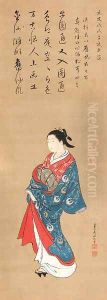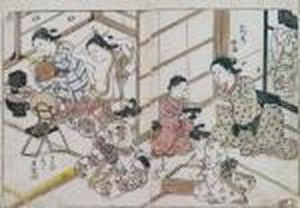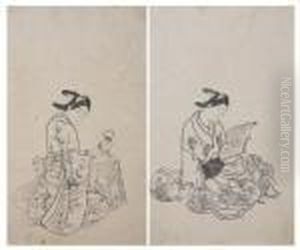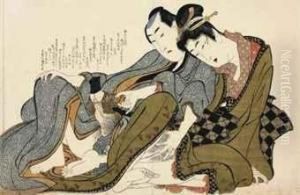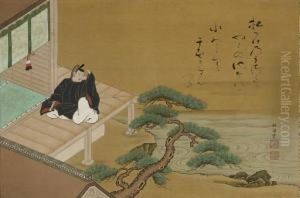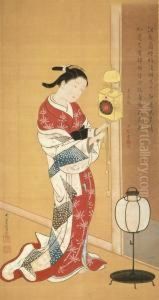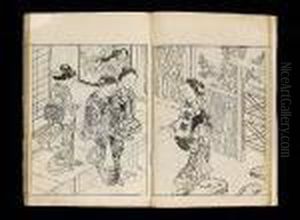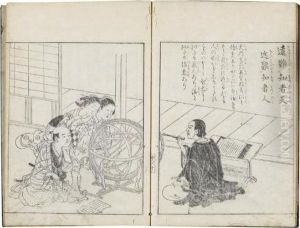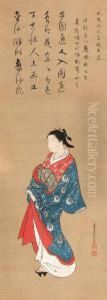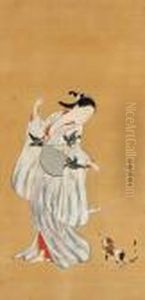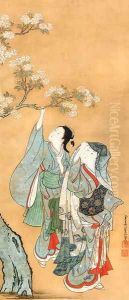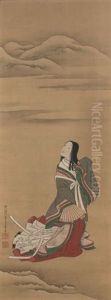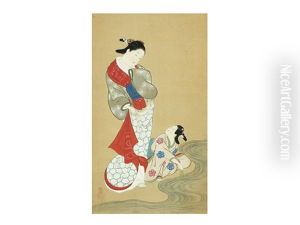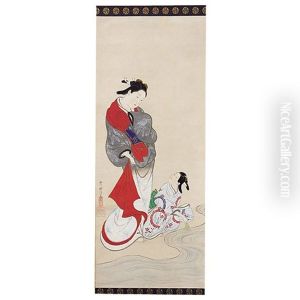Nishikawa Sukenobu Paintings
Nishikawa Sukenobu, often known simply as Sukenobu, was a prolific Japanese ukiyo-e artist renowned for his prints and illustrated books. Born in 1671 in Kyoto, he was active during the Edo period, a time of great cultural development and artistic innovation in Japan. Unlike many of his contemporaries who were based in Edo (modern-day Tokyo), Sukenobu stayed in the imperial capital of Kyoto for most of his life, which influenced his artistic style and subjects.
Sukenobu's work is particularly notable for its focus on the female figures of his time, often representing the lifestyles and fashions of women from various social strata. He produced a vast number of woodblock prints and books that depict women in their daily activities, from the courtesans of the pleasure districts to the wives of samurai and merchants. His works are characterized by their attention to detail, refined elegance, and the portrayal of fabrics and clothing with intricate patterns.
Among his most famous works are the 'Hyakunin jorō shinasadame' ('Appraisal of a Hundred Beauties'), which showcases a wide variety of women's fashions and lifestyles, and the 'Ehon tamatama hana' ('Picture Book by Chance'), a collection of genre scenes and landscapes. Sukenobu was also known for his instructional manuals on various subjects, such as 'Bijin zu-e' ('Figures of Beautiful Women'), which was intended for other artists to study the depiction of female beauty.
Sukenobu's influence extended beyond the world of art; his images contributed to the popular culture and fashion of Kyoto, and he played a role in shaping the visual representation of women in Japanese art. His detailed portrayal of textiles has provided valuable information about the design and production of kimono fabrics during his lifetime.
Sukenobu passed away in 1750, leaving behind a legacy that would continue to be appreciated for its artistic quality and valuable cultural insights into the Edo period society. His works are still studied and admired today, not only for their aesthetic merit but also for their historical significance.
